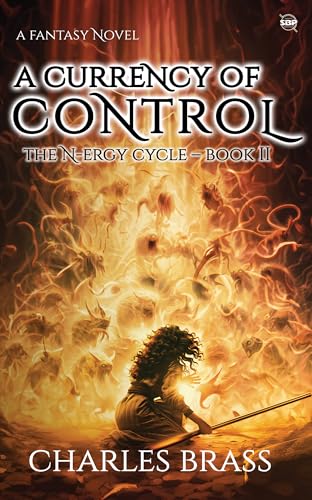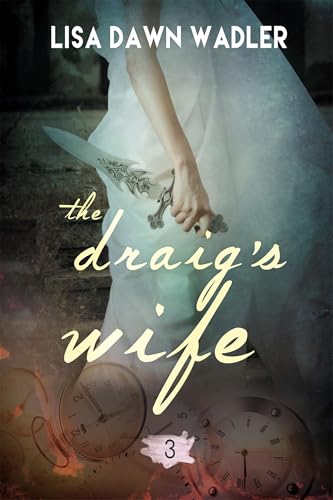By Stephen Windwalker, Editor of Kindle Nation Daily – Originally posted 5.22.2010
- Click here to see underlying statistical analysis (Based on U.S. Kindle Store book catalog as of 5 p.m. ET 5.22.2010)
- Click here for related posts
It has been only 15 days since our last systematic look at the population of ebook price points in the Kindle Store, but there are two reasons why it makes a lot of sense to take a fresh look today:
- first, Amazon fulfilled its plan to restructure its Kindle Store bestseller lists and divide them into “paid” and “free” listings overnight last night; and
- equally important, during the past 15 days the Kindle Store catalog has experienced its most explosive growth ever, averaging over 5,000 new titles per day, with especially interesting concentrations by price point.
We’ll include all the usual statistical breakdowns below, but lets look at the headlines first:
- Of the 75,345 net new titles added to the U.S. Kindle catalog since May 7, nearly 80% (59,638) are priced between $5 and $9.98, inclusive, which is clearly the new salesworthy price range not only for backlist titles but for the vast majority of titles that are otherwise available in paperback.
- While the percentage of titles priced from $5 to $9.98 grew from 17.95% to 25.81% during the past 15 days, every other price range declined in relative percentage of the Kindle catalog.
- With the extraction of free books from the Kindle Store’s main bestseller list, representation from that same $5-$9.98 price range grew from 12 to 29 of the top 100 paid titles. Representation from the $9.99 price point grew from 16 to 36 of the top 100; $10-$12.99 grew from 5 to 17; and $13-$14.99 from 3 to 5.
- The number of top 100 paid bestsellers priced from 99 cents to $2.99 grew dramatically from 2 to 12 titles. This may be a foreshadowing indication that, as the effects of the bestseller list restructuring and the coming royalty restructuring for the Kindle’s Digital Text Platform play out, we may find roughly speaking that “$2.99 is the new free” in the Kindle Store, with prices in that general range standing out in greater and more appealing relief on the Kindle Store’s paid bestseller lists, while free books could get lost in the great and growing ocean of public domain titles.
Inside the numbers there are increasing signs of chinks in the dark armor of the agency price-fixing model publishers’ alliance. That 30 to 50% increase in ebook prices for which some publishers had been salivating, and with which Steve Jobs and Apple’s iBooks Store seemed such eager anti-consumer co-conspirators, is not looking like a winning hand. After peaking at 4.24% with the launch of the iBooks Store the first week of April, the overall percentage of U.S. Kindle catalog titles priced between $10 and $14.99 has declined steadily to 4.09% on May 7 and 3.66% on May 22. This decline, along with the data points that follow, may speak more powerfully about the agency model publishers’ actual sales experience than unsourced, anecdotal, and self-serving reports that publishers have been thrilled with their iBooks sales:
- Despite the fact that 22 of the top 100 paid Kindle bestsellers are priced at $10 and up, only 5 of those (and none of the top 25) are priced in the $13-to-$14.99 range. While it may be early to say that that higher ebook price range for putative bestsellers is utterly unsustainable, there are certainly some signs that publishers are suppressing their own sales at those price levels.
- There are also increasing signs that even the agency model publishers are being lured back to $9.99 by the promise of brisk sales there. Of the 36 top 100 bestsellers that are priced at $9.99, 13 are offerings from agency model publishers. It’s true that 8 of those are otherwise available in paperbacks at print prices lower than their $9.99 Kindle versions, but 5 of the 13 are $9.99 Kindle versions where the only print version available is a hardcover. As suggested in a previous post, we may be looking at the beginning of a trend in which these collusive price-fixing publishers demonstrate about as much honor and solidarity among their own ranks as they have previously demonstrated in their dealings with readers.
The extent to which Apple’s iBooks Store can save these agency model publishers from themselves, or sustain the agency model for ebooks much past 2010, is difficult to assess when the company has been dramatically silent or circumspect about either its actual sales of paid ebooks or the size of its paid ebook catalog. In the past, if memory serves, Mr. Jobs has suggested that Amazon wasn’t boasting about its Kindle sales numbers because there was nothing to boast about. While this may or may not have been a fair inference with respect to Amazon and the Kindle, we do know from a variety of sources the following:
- The growth in the Kindle catalog for the past 15 days surpasses the only reported figures for the overall size of the iBooks catalog.
- Kindle content was reported by publishing industry representatives to hold a remarkably high market share among all ebook content, estimated at over 85 per cent, late last year, and we have yet to see evidence of any dramatic decline in Kindle market share. When it comes to selling content, after all, catalog counts.
- While the current placement of the iBooks app among the top 3 free apps for the iPad is impressive enough, the fact is that it is a free app offered and branded by the device manufacturer, and given the relative catalog sizes involved it may well be that there are as many or more paid books being purchased and downloaded via the Kindle for iPad app (currently ranked around #12 among the top free iPad apps) than via the iBooks for iPad app.
There’s no doubt that the iPad and the continued development of its smaller Apple i-siblings will be game changers when it comes to ebook content, just as they will be game changers with respect to all kinds of other content and hardware. But it remains to be seen whether they will provide the leverage that publishers require to budge Amazon away from its Kindle mission or the mass Kindle-compatible platform that will ensure the success of that mission.
Here’s a price breakdown of the 587,104 book titles in the Kindle Store as of 5 p.m. EDT on May 22, 2010:
- 20,584 Kindle Books Priced “Free” (3.51%)
- 4,830 Titles Priced from a Penny to 98 Cents (0.82%)
- 55,901 Kindle Books Priced at 99 Cents (9.52%)
- 76,054 Kindle Books Priced from $1 to $2.99 (12.95%)
- 109,706 Kindle Books Priced from $3 to $4.99 (18.69%)
- 151,509 Titles Priced from $5 to $9.98 (25.81%)
- 56,059 Titles Priced at $9.99 (9.55%)
- 7,700 Titles Priced from $10 to $12.99 (1.31%)
- 13,803 Titles Priced from $13 to $14.99 (2.35%)
- 90,958 Titles Priced at $15 and Up (15.49%)
Here’s where we stood with the 511,759 book titles in the Kindle Store as of 9 a.m. EDT on May 7, 2010:
- 20,601 Kindle Books Priced “Free” (4.03%)
- 4,857 Titles Priced from a Penny to 98 Cents (0.94%)
- 53,936 Kindle Books Priced at 99 Cents (10.54%)
- 73,987 Kindle Books Priced from $1 to $2.99 (14.46%)
- 101,014 Kindle Books Priced from $3 to $4.99 (19.74%)
- 91,871 Titles Priced from $5 to $9.98 (17.95%)
- 54,342 Titles Priced at $9.99 (10.62%)
- 7,434 Titles Priced from $10 to $12.99 (1.45%)
- 13,489 Titles Priced from $13 to $14.99 (2.64%)
- 90,257 Titles Priced at $15 and Up (17.64%)
Here’s where we stood with the 487,715 book titles in the Kindle Store as of 9 a.m. EDT on April 7, 2010:
- 20,620 Kindle Books Priced “Free” (4.23%)
- 4,709 Titles Priced from a Penny to 98 Cents (0.97%)
- 46,360 Kindle Books Priced at 99 Cents (9.51%)
- 69,846 Kindle Books Priced from $1 to $2.99 (14.32%)
- 94,891 Kindle Books Priced from $3 to $4.99 (19.46%)
- 86,924 Titles Priced from $5 to $9.98 (17.82%)
- 53,705 Titles Priced at $9.99 (11.01%)
- 7,537 Titles Priced from $10 to $12.99 (1.51%)
- 13,124 Titles Priced from $13 to $14.99 (2.69%)
- 90,011 Titles Priced at $15 and Up (18.46%)
Here’s where we stood with the 480,238 book titles in the Kindle Store on April 1:
- 20,620 Kindle Books Priced “Free” (4.29%)
- 4,706 Titles Priced from a Penny to 98 Cents (0.98%)
- 43,993 Kindle Books Priced at 99 Cents (9.16%)
- 68,807 Kindle Books Priced from $1 to $2.99 (14.33%)
- 93,706 Kindle Books Priced from $3 to $4.99 (19.51%)
- 85,612 Titles Priced from $5 to $9.98 (17.83%)
- 53,124 Titles Priced at $9.99 (11.06%)
- 5,952 Titles Priced from $10 to $12.99 (1.24%)
- 14,158 Titles Priced from $13 to $14.99 (2.95%)
- 89,525 Titles Priced at $15 and Up (18.64%)
Here’s where we stood with about 463,000 Kindle Store titles on March 10:
- 20,125 Kindle Books Priced “Free” (4.34%)
- 2,588 Titles Priced from a Penny to 98 Cents (0.56%)
- 39,095 Kindle Books Priced at 99 Cents (8.44%)
- 64,105 Kindle Books Priced from $1 to $2.99 (13.84%)
- 90,580 Kindle Books Priced from $3 to $4.99 (19.55%)
- 84,055 Titles Priced from $5 to $9.98 (18.15%)
- 53,697 Titles Priced at $9.99 (11.56%)
- 5,793 Titles Priced from $10 to $12.99 (1.25%)
- 13,731 Titles Priced from $13 to $14.99 (2.96%)
- 89,448 Titles Priced at $15 and Up (19.31%)
And here’s where we stood with about 447,000 Kindle Store titles on February 25:
- 19,795 Kindle Books Priced “Free” (4.42%)
- 3,023 Titles Priced from a Penny to 98 Cents (0.67%)
- 36,370 Kindle Books Priced at 99 Cents (8.12%)
- 62,275 Kindle Books Priced from $1 to $2.99 (13.9%)
- 87,722 Kindle Books Priced from $3 to $4.99 (19.58%)
- 81,230 Titles Priced from $5 to $9.98 (18.13%)
- 55,269 Titles Priced at $9.99 (12.34%)
- 5,139 Titles Priced from $10 to $12.99 (1.15%)
- 9,331 Titles Priced from $13 to $14.99 (2.08%)
- 87,771 Titles Priced at $15 and Up (19.59%)



































































































